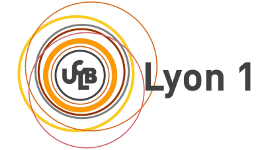From Tabletops to Smartwatches : Layers Beyond Physical Access
Abstract
Enabling access to a computing device is likely to have a huge impact in the quality of life of a person. Every once in a while, new technologies are devised and impact the way we communicate, work and even, how we have fun. Paradigmatically, it is often the case that a new technology empowers the general able-bodied user and fosters exclusion of people with disabilities. The emergence of touch-based smartphones as the de facto mobile interaction gadget created a gap between those that were able to use the device as it was deployed in the market and those that were not able to do so. The potential usages of these devices exploded and users that were at that time able to use mobile phones with physical keypads similarly to their peers, saw themselves living in the past of mobile interaction, from one day to the other. This was the case of blind people when smartphones started to dominate the market circa 2007.
It is not a surprise that the inclusion of VoiceOver as a built-in accessibility feature in the IPhone 3GS version is a major turning point in the recent history of accessible computing. At the time, when it was launched in 2009, smartphones were already established as a person’s handheld computer, way beyond a simple communication tool, and had an impact in people’s lives that could not be overseen. Apple democratized access to smartphones and the others followed, always a little behind. Researchers focused, for the following years, mostly on understanding the impact of the built-in accessibility features and enabling or improving specific tasks and applications, but generally accepting the VoiceOver modus operandi. This research was carried mostly in the laboratory limiting the understanding of the integration of these gadgets in one’s life, particularly to what respects the relationship with peers.
My research has mostly focused in understanding the benefits and flaws of modern touchscreen technology and how it can be improved for people with different abilities. In this sense, we have studied how blind and visually impaired people learn and interact with touchscreen devices being able to identify the major barriers in the adoption of this technology. Furthermore, we have focused on challenging tasks, like text-entry, seeking to provide alternatives that fits the users’ needs. From gesture-based text-entry to Braille input, from tabletops to smartwatches, I will present the methods and results achieved in these studies. I will also focus on the shortcomings of current mobile devices in the social arena. Particularly, we motivate and present work in the areas of security and privacy, inconspicuous interaction, and social context awareness. With the emergence of new technologies it is relevant to keep in mind that enabling physical access is not enough as social aspects need to be guaranteed. These layers beyond access need to be pursued and added until we are able to state that people with disabilities stand in par with others in social contexts.
Biography
Tiago Guerreiro is an Assistant Professor at the University of Lisbon (Faculty of Sciences, Informatics Department) and a researcher at the Human-Computer Interaction & Multimedia group at LaSIGE. He received his PhD in Information Systems & Computer Engineering from the Technical University of Lisbon where he focused on individual differences among blind people and how they impact dealing with mobile interaction demands. His current research interests are on mobile accessibility for blind and motor impaired people, cognitive and communication aids for people with dementia, usable privacy and inconspicuous interaction. In these areas, he has published 75+ international peer-reviewed papers, including best papers at CHI, ASSETS, and ITS. He was a general chair at W4A’16, program chair at W4A’15, Associate Chair at CHI ’14 to ’17, local chair at ASSETS’15, among many others. He is a father of two and loves soccer!


















